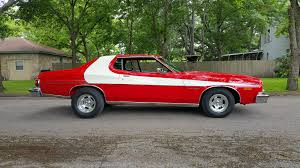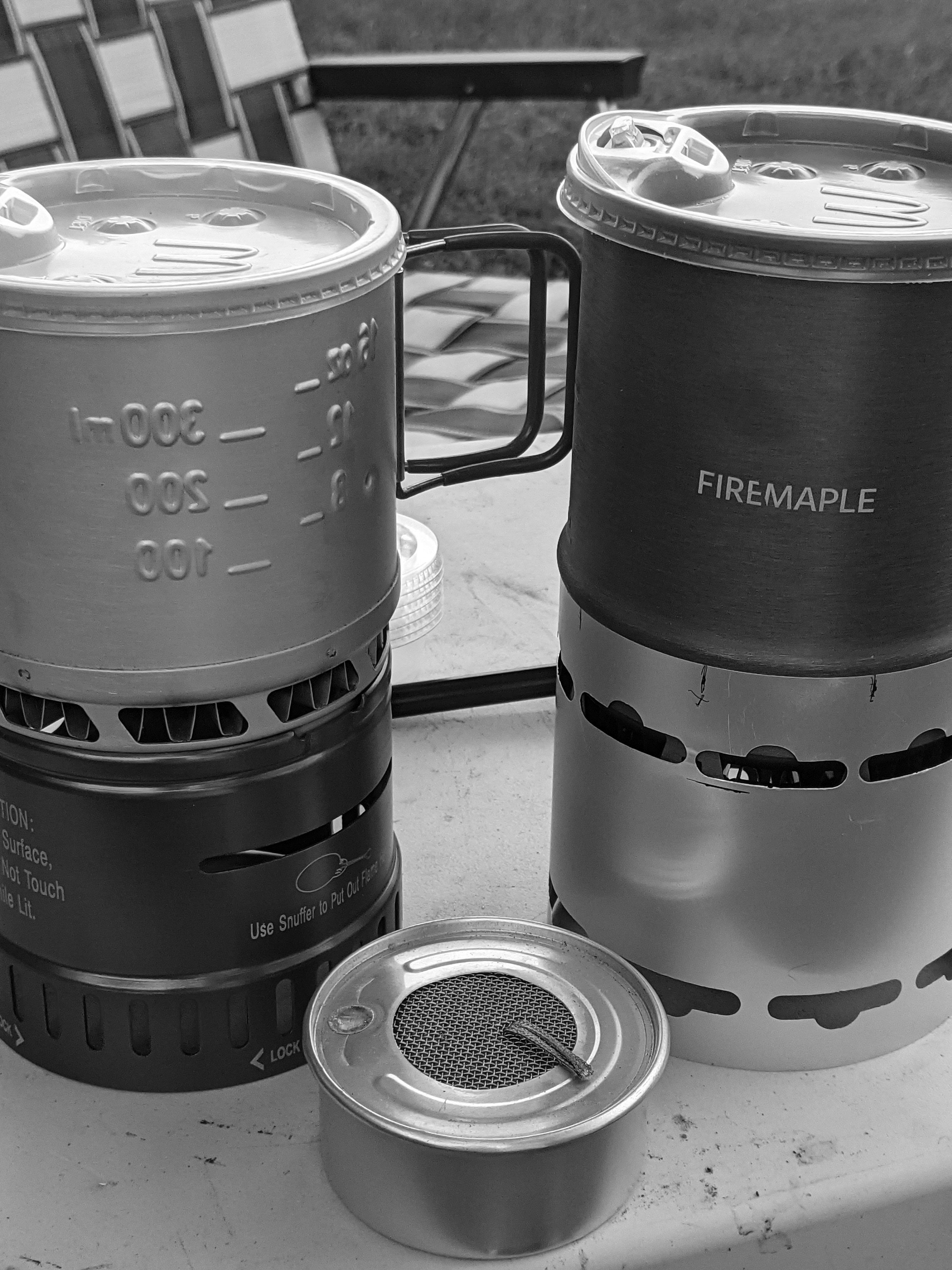Topic
Pots With Heat Exchangers
Forum Posting
A Membership is required to post in the forums. Login or become a member to post in the member forums!
Home › Forums › Gear Forums › Gear (General) › Pots With Heat Exchangers
- This topic has 295 replies, 3 voices, and was last updated 7 months ago by
 DAN-Y.
DAN-Y.
-
AuthorPosts
-
Nov 3, 2019 at 10:40 am #3617094
Dan, yes, but even that is a bit off. Removing the fins & heat shield mass from the equation will influence the test results, albeit very minorly.
I do most of my morning coffee in shifts…never seem that rushed to get water boiling. I average around 6gm in the field for 500ml with average water temp of around 7-10C averaged over about 50-75 week long trips over several years. The best I could do in my kitchen was about 5g 1/2L@1C(ice water) boiled at 99C due to altitude in about 8 minutes. Faster heating wastes fuel. Slower heating wastes fuel. I believe this is what Roger was alluding to. But, you kind’a have to know the outside temperature, adjustments on flame size due to pressure changes (temps and altitude,) etc…more art than science.
I plan on using 9gm in the morning and 6gm at night (15g/day) so a 220gm can (around 8oz of fuel) will last about 14 days, but there is always about an ounce (30gm) left in reserve.
Most of this is done in a 1 quart grease pot that weighs about 3.5oz (including the lid and bail handle.) Any fuel savings is so minor compared with the 6.5oz Olicamp XTS that I cannot justify the change. At best, I might save another half ounce in fuel over two weeks, but this still doesn’t change the starting weight calculation.
Nov 3, 2019 at 5:52 pm #3617121Removing the fins & heat shield mass from the equation will influence the test results, albeit very minorly.
We will have to wait and see.
Nov 23, 2019 at 2:22 pm #3620074Just checking in to see if Roger has conducted at least one test of the 2 pots with and without fins.
Nov 23, 2019 at 8:47 pm #3620156Hi Dan
Yes, I have done most of the testing needed. There is enough there for a BPL article.
I have been occupied with another project which started first, but the article for that has been submitted to BPL a couple of days ago, so I will be getting into the pot trial soon. (I hope that phrase does not mislead anyone!)
I will send you an embargoed copy for review as soon as I can.
Cheers
Jan 25, 2020 at 8:59 am #3628671Roger did complete his testing and agrees the fins “for the most part” add 30% efficiency. He used the 2 pots that I sent him, one with fins and one with fins removed.
Don’t know if he will ever publish his complete testing so I post the most imprtant results……30% more efficient.
Thank you Roger! :-)
Jan 25, 2020 at 1:46 pm #3628711Yes, article written, submitted and accepted for publication. When is another matter: not under my control.
Cheers
Jan 25, 2020 at 10:28 pm #362876030% sounds right in my experience…
Jan 26, 2020 at 8:16 am #3628787I agree, Brad. Trouble is, they are not trail effective for short trips.
A typical HE 1L pot weighs about 180g. My HE 1qt pot weighs about 95gm. Roughly this is an 85gm difference.Assuming everyone is using butane:
I use 12gm/day in fuel at a measured 15% increase in efficiency due to the HE built in to the pot. The 30% means I will get another (roughly) 4g of fuel savings per day. 85gm/4gm per day = about 21 days to break even. OK, that’s me.Generally, most packers use about 25g/day of fuel and NO heat exchangers. So, even at 30% he would save about 8.3g per day…call it 9gm. Simply switching to a lighter pot with no heat exchanger means an 85g savings, so, about 9days to break even with fuel.
So, for short trips (ie, less than 9-21 days) it would not pay to use a heat exchanger.
Jan 26, 2020 at 2:01 pm #3628827Utilizing the HX Inferno Pot with a HX titanium skirt and a 4 legged canister stove. Having some awesome results. Fuel usage for 500ml of water to boil averaging 5 grams. Those figures given in thread on HX pots. Read through the pages of this thread to get an idea of the benefits of this Inferno HX pot. I have performed many tests with a canister stove and there is no discoloration whatsoever on the bottom of pot and exchange fins…..I’m well pleased.
This is the best setup for me when I use a canister stove, 5 grams per 500ml boil:
Jan 26, 2020 at 2:51 pm #3628832Dan, Is that the Sterno pot? The greater mass of those aluminum fins is unusually good. And they’re aluminum! Titanium is so much less thermal conductive, we should probably consider Ti fins to be vortex generators (which help) more than traditional, conductive fins.
And the your spacing on the wind screen / shroud* looks ideal – enough cross-sectional area for exhaust gases, but tight enough to (maybe?) be turbulent flow in the annular space.
Have you considered hitting the pot of the pot with black (or, really, any color) barbecue / engine-block spray paint? My tests back in 2011 were that painted surfaces absorb (and emit) vastly more infrared than shiny metal and help absorb more heat when there’s glowing-orange metal burner nearby. So it helps over butane, propane or white gas burner heads and not so much over alcohol or esbit.
Really long, super geeky thread on painting pots including actual experimental DATA: https://backpackinglight.com/forums/topic/57444/#comments
*If you construct your wind screen from the fenders of Starsky and Hutch’s “striped tomato”, would it be “The Shroud of Turin”?
 Jan 26, 2020 at 5:59 pm #3628872
Jan 26, 2020 at 5:59 pm #3628872Yes David, the Inferno Pot.
Per your experience, I will paint my pot with black stove paint, I need all the help I can get :-)
Jan 26, 2020 at 7:10 pm #3628882If you are going to paint your infernal pot black, shouldn’t you add a few red ‘flames’ around the edge?
Cheers
Jan 26, 2020 at 7:42 pm #3628883From the handles in both directions:
 Jun 27, 2024 at 7:16 pm #3814089
Jun 27, 2024 at 7:16 pm #3814089The Sterno Inferno has some strong competition…..The Fire Maple Petrel:
 Jun 28, 2024 at 5:54 pm #3814202
Jun 28, 2024 at 5:54 pm #3814202Sterno Inferno pot is a fair bit lighter…
Jun 28, 2024 at 8:57 pm #3814210Fire Maple has more heat exchange fins and also has more heat exchange shroud covering the fins which equates to faster boil times and less fuel consumption…win win.
Jun 28, 2024 at 10:22 pm #3814211These are just thoughts of mine.
Heat Exchanger pots can be a strong carbon monoxide risk. Proper combustion in a propane/butane flame relies on the combustion process going all the way from hydrocarbon molecules to breakdown molecules to carbon monoxide, and only at the last does the CO combine with more oxygen to make CO2. If you interrupt the burning process, the final stage in the process (giving CO2) may not happen. That is called flame quenching, when the heat in the gases is sucked out and the flame is cooled to below the temperature needed for further chemistry.
And that is what many heat exchanger pots do. By having the fins too close to the flames, the flames are quenched and not all the CO is burnt into CO2. The MSR Reactor and its copies are particularly extreme examples of this, but many other HE pots have the same problem.
Can this risk be avoided? Yes, it can. All you have to do is lift the pot up by about (say) 20 mm so the flame can burn to completion before it is quenched and you will be in business. Will doing this make the HE pot much less efficient? No, not really. At the top end of the flame you have some really (really) hot gas. Let this hot gas heat the fins, after the CO has burnt. But persuading vendors to leave that gap – that is hard.
Some of the reason is the perception that having a gap between the flame and the pot will let the flame blow away in a high wind. This is true: we have many good photos in these BPL channels of that problem, but just a little windscreen will solve that problem.
Footnote: a windscreen will not cure the Reactor problem: the flame has been cooled too much by the mesh over the top. CO production is inherent in the design. Will saying this make MSR unhappy? Yes, but we (BPL and I) warned MSR about this when they first released the Reactor.
My 2c
CheersJun 29, 2024 at 6:30 am #3814215Fire Maple has more heat exchange fins and also has more heat exchange shroud covering the fins which equates to faster boil times and less fuel consumption…win win.
I assume you’ve tested both side by side – can you share the link to the data? Thanks.
Jun 29, 2024 at 9:38 am #3814219My testing of the Inferno is published in a few threads here. My testing of the Fire Maple continues.
I have modified the FM by adding a ridge so the custom windscreen/pot support can hold the pot at the precise height so as to insure complete combustion…no CO. win win.
Jun 29, 2024 at 10:07 am #3814220My testing of the Inferno is published in a few threads here. My testing of the Fire Maple continues.
I have modified the FM by adding a ridge so the custom windscreen/pot support can hold the pot at the precise height so as to insure complete combustion…no CO. win win.
Ok – so you don’t really know yet. Assuming you’re testing is not with cartridge stoves, but rather alcohol? Thanks.
Jun 29, 2024 at 10:27 am #3814222Ok – so you don’t really know yet. Assuming you’re testing is not with cartridge stoves, but rather alcohol? Thanks.
Tests with alcohol and modified FM is much better than the Inferno.
-
AuthorPosts
- You must be logged in to reply to this topic.
Forum Posting
A Membership is required to post in the forums. Login or become a member to post in the member forums!
Our Community Posts are Moderated
Backpacking Light community posts are moderated and here to foster helpful and positive discussions about lightweight backpacking. Please be mindful of our values and boundaries and review our Community Guidelines prior to posting.
Get the Newsletter
Gear Research & Discovery Tools
- Browse our curated Gear Shop
- See the latest Gear Deals and Sales
- Our Recommendations
- Search for Gear on Sale with the Gear Finder
- Used Gear Swap
- Member Gear Reviews and BPL Gear Review Articles
- Browse by Gear Type or Brand.






